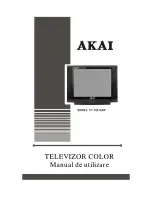
CC1000
SWRS048A Page 19 of 55
12. Bit synchroniser and data decision
Sampler
Average
filter
Data
filter
Decimator
Frequency
detector
Data slicer
comparator
Figure 11. Demodulator block diagram
A block diagram of the digital demodulator
is shown in Figure 11. The IF signal is
sampled and its instantaneous frequency
is detected. The result is decimated and
filtered. In the data slicer the data filter
output is compared to the average filter
output to generate the data output.
The averaging filter is used to find the
average value of the incoming data. While
the averaging filter is running and
acquiring samples, it is important that the
number of high and low bits received is
equal (e.g. Manchester code or a
balanced preamble).
Therefore all modes, also synchronous
NRZ mode, need a DC balanced
preamble for the internal data slicer to
acquire correct comparison level from the
averaging filter. The suggested preamble
is a ‘010101…’ bit pattern. The same bit
pattern should also be used in Manchester
mode, giving a ‘011001100110…chip
pattern. This is necessary for the bit
synchronizer to synchronize correctly.
The averaging filter must be locked before
any NRZ data can be received. If the
averaging filter is locked
(MODEM1.LOCK_AVG_MODE=’1’), the
acquired value will be kept also after
Power Down or Transmit mode. After a
modem reset
(
MODEM1.MODEM_RESET_N
), or a
main reset (using any of the standard
reset sources), the averaging filter is reset.
In a polled receiver system the automatic
locking can be used. This is illustrated in
Figure 12. If the receiver is operated
continuously and searching for a
preamble, the averaging filter should be
locked manually as soon as the preamble
is detected. This is shown in Figure 13. If
the data is Manchester coded there is no
need to lock the averaging filter
(
MODEM1.LOCK_AVG_IN
=’0’), as shown
in Figure 14.
The minimum length of the preamble
depends on the acquisition mode selected
and the settling time. Table 4 gives the
minimum recommended number of chips
for the preamble in NRZ and UART
modes. In this context ‘chips’ refer to the
data coding. Using Manchester coding
every bit consists of two ‘chips’. For
Manchester mode the minimum
recommended number of chips is shown
in Table 5.
















































